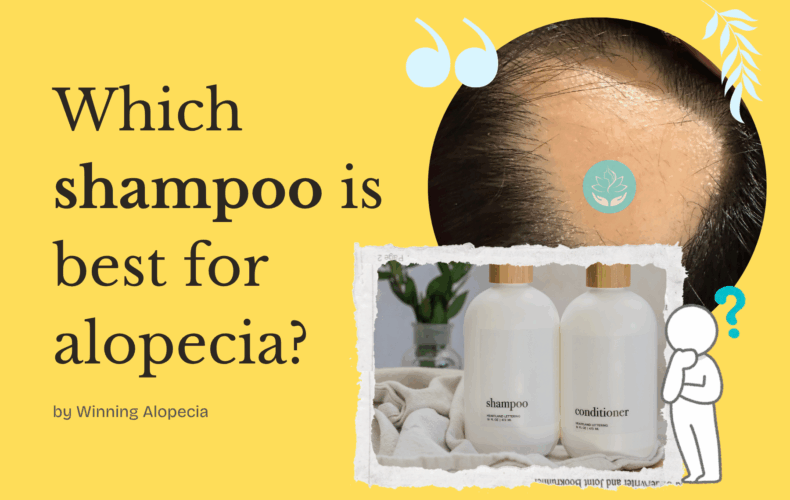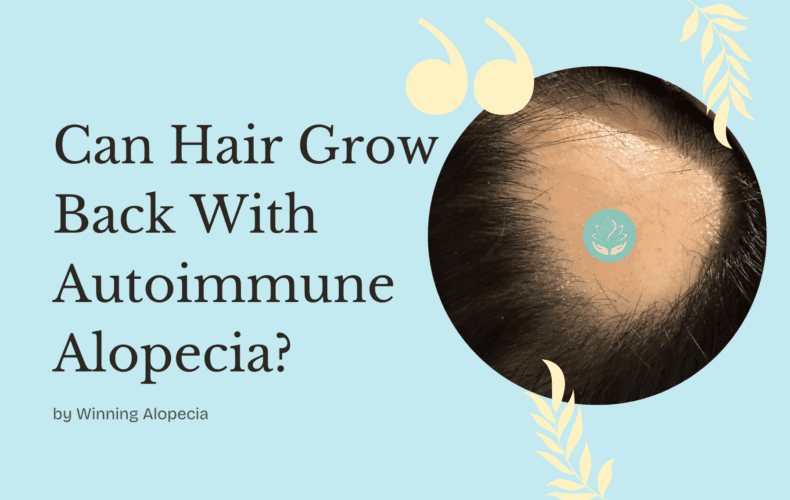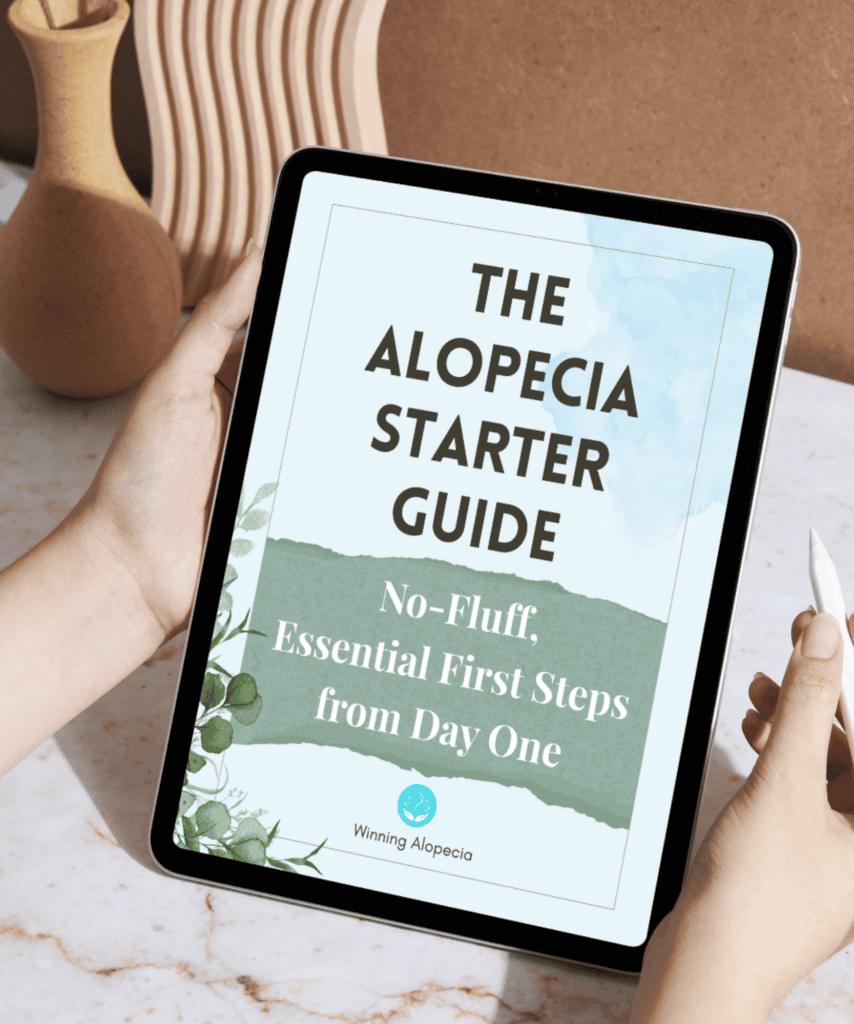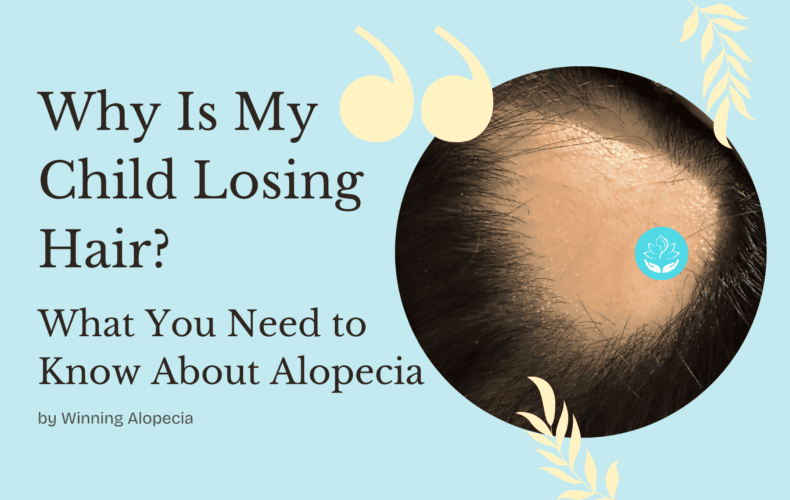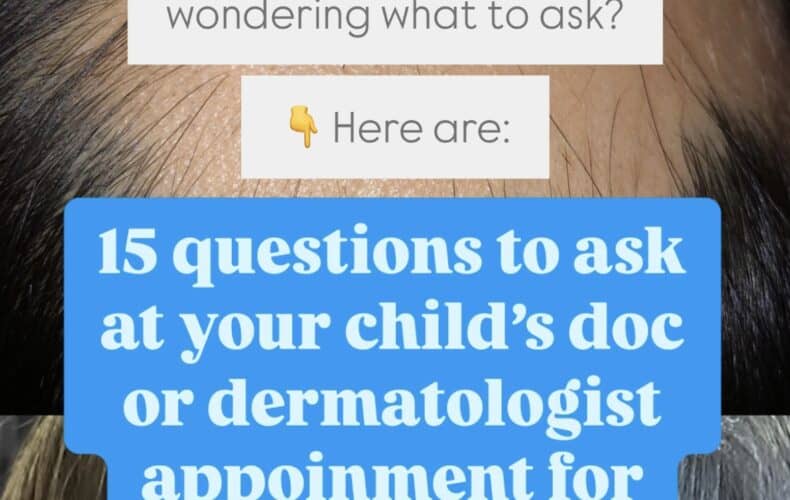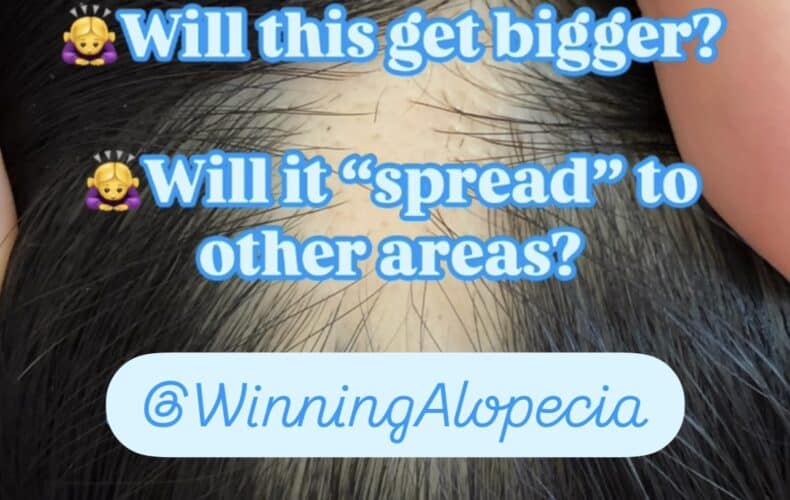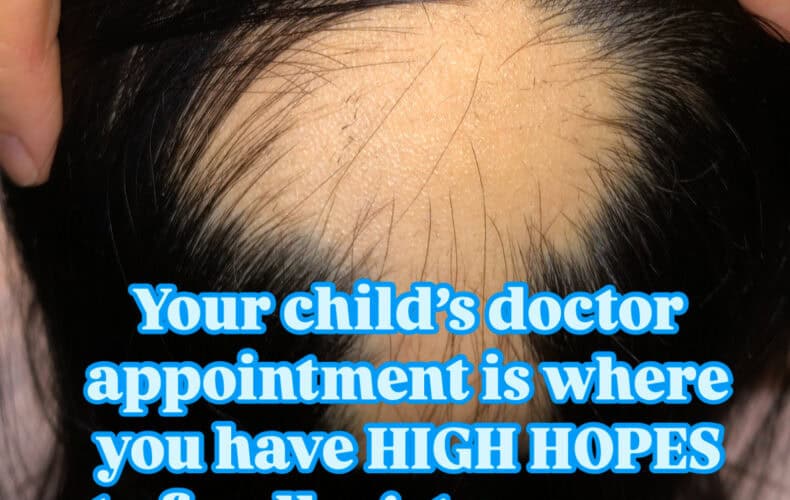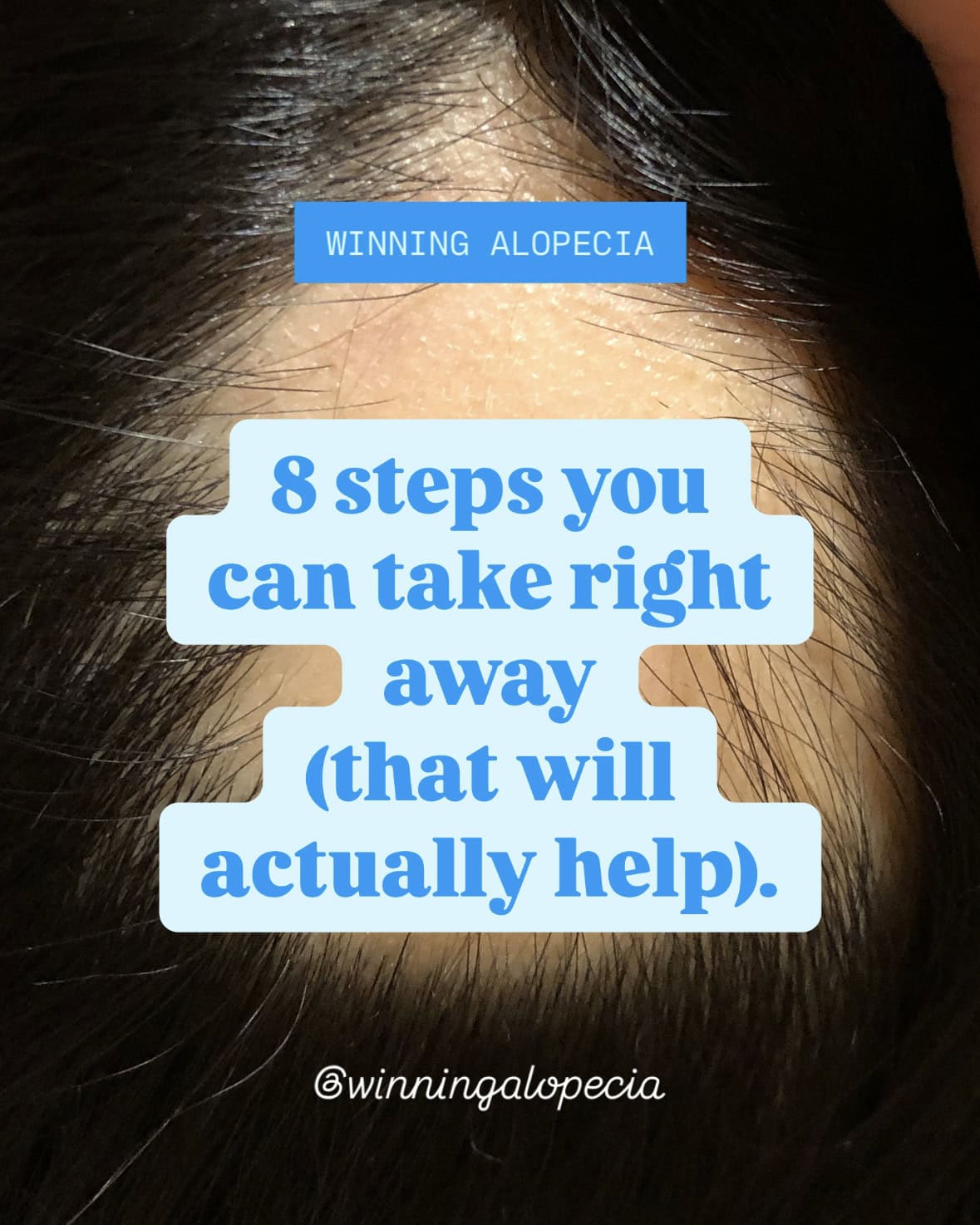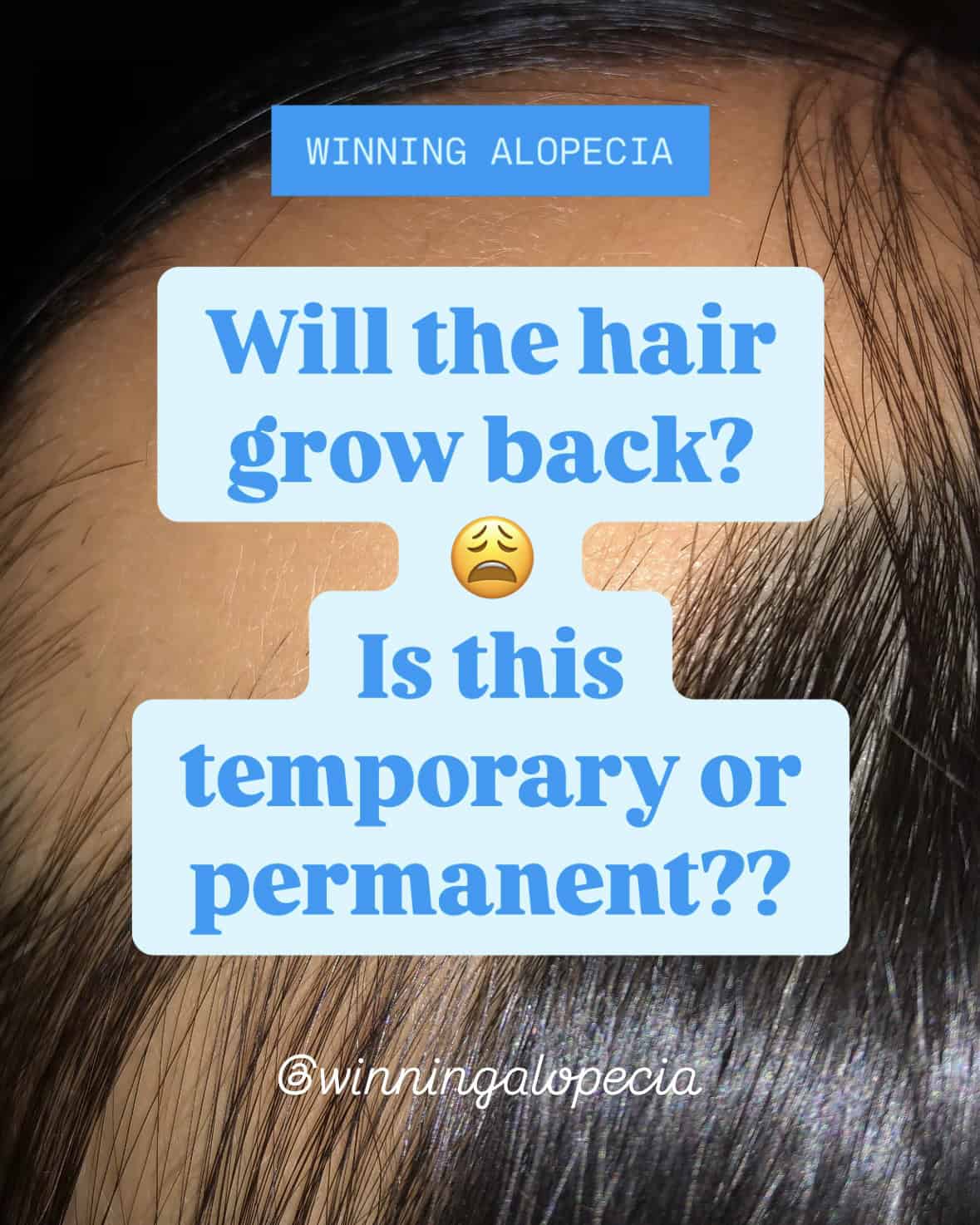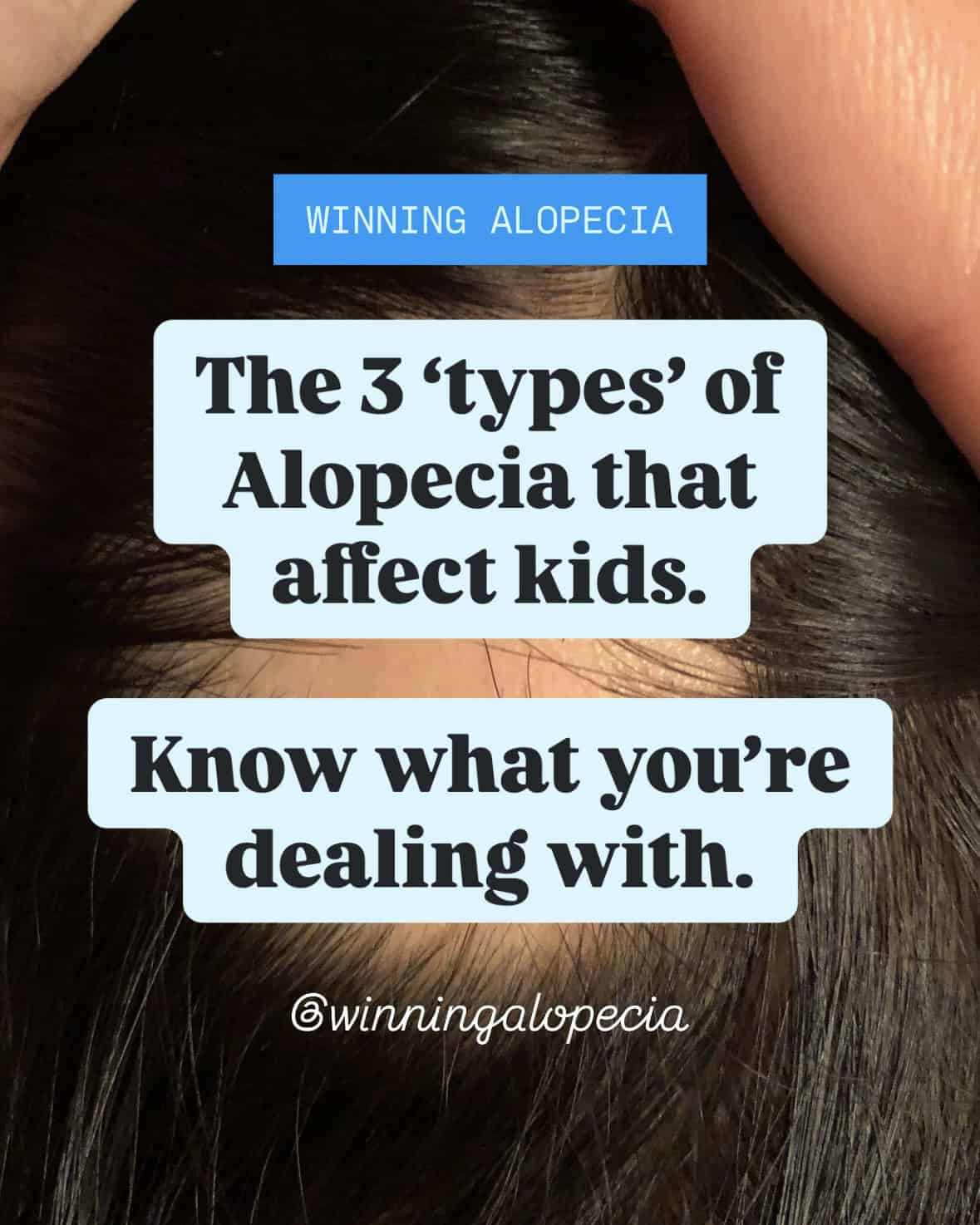Which Shampoo Should I Use for Alopecia? What Actually Works for Autoimmune Hair Loss
Will Shampoo Help with Hair Loss Due to Alopecia?
The first question that many people ask is: “Which shampoo should I use for alopecia?”
I completely understand. We are naturally drawn to focus on the problem spot. In the case of hair loss and alopecia, the hair seems to be the obvious problem spot, and shampoo is something that we think of right away as something we use regularly on the hair. There are also many products on the shelves that make claims on having an effect on hair growth. This helps to precondition our minds to seek for shampoo as the first step.
However, here’s the thing: No shampoo can cure or reverse autoimmune-related hair loss.
This might not be what you wanted to hear, but it’s important to understand this. If you or your child has alopecia areata or another autoimmune type of hair loss, shampoo by itself will not stop the hair loss or make your hair grow back.
Can Shampoo Fix My Alopecia?
How Long Does Shampoo Actually Stay on Your Scalp?
Shampoo only touches your scalp for a few minutes at most when you’re washing your hair. That’s simply not enough time for any ingredients to get deep enough into your skin to affect what’s happening with your immune system at the hair follicle level.
What Actually Causes Alopecia Hair Loss?
Alopecia areata, totalis or universalis happens when the hair follicles are disrupted by immune system activity, affecting the natural hair growth cycle, resulting in unusual pattern of hair loss. This is a complex process happening inside your body that requires much more than a shampoo that gets rinsed away in minutes.
Does the Shampoo I Use Matter for Alopecia?
In short yes, but not in the way most people think. While shampoo can’t directly regrow your hair, it does play a role in keeping your scalp healthy, which matters in providing a healthy environment for hair to regrow in general.
How Does the Right Shampoo Help with Alopecia?
What Good Shampoo Does:
- Keeps your scalp clean so hair follicles aren’t blocked by buildup
- Removes oils, residue, and irritants that could interfere with regrowth
- Creates a healthy environment for hair when your body is ready to grow it back
How ‘Bad’ Shampoo Can Hurt Your Progress:
- Many regular shampoos contain synthetic fragrances and harsh chemicals
- These ingredients get absorbed through your scalp and add to your body’s toxic load
- When you’re trying to reduce inflammation and help your immune system, every extra chemical your body has to process makes things harder
Do Hair Growth Shampoos Actually Work?
You’ve probably seen shampoos advertising ingredients like biotin, caffeine, or rosemary for hair growth. Here’s what you should know about these:
Does Biotin in Shampoo Help with Hair Loss?
Biotin in shampoo doesn’t work the same way biotin (vitamin B7) that we consume by eating foods containing this nutrient. The biotin in shampoo can’t penetrate deep enough through your scalp to have any real effect. Even biotin supplements, often synthetically manufactured, don’t fix the immune system problems causing alopecia.
Will Caffeine Shampoo Make My Hair Grow?
Some studies show caffeine might stimulate hair follicles in lab tests, but when it’s in shampoo that gets rinsed out after a few minutes? The claimed benefits are questionable.
Is Rosemary Shampoo Good for Alopecia?
Real rosemary has actually been shown to have legitimate benefits for hair health and circulation. I’ve personally seen great results from infusing fresh rosemary into my own homemade hair care products.
But in commercially made rosemary shampoos, I have to ask: What form of rosemary are they actually using? Is it fresh rosemary extract, dried powder, synthetic rosemary fragrance, rosemary oil, or some chemically processed version? How do they get it to stay stable in the product?
Most commercially made shampoos contain minimal amounts of rosemary, often in forms that have been so processed they’ve lost much of their beneficial properties. Many times it’s included more for the marketing appeal of saying “contains rosemary” than for any real therapeutic benefit.
Why Don’t Hair Growth Shampoos Work?
Most shampoos marketed for “hair growth” contain these ingredients in such small amounts or they have been so processed to have any meaningful effects on hair growth. They’re often surrounded by other chemicals that could actually add to your body’s burden instead.
What Should I Look for in Shampoo if I Have Alopecia?
When you have alopecia, your goal with shampoo should be to avoid harm and reduce stress on your body while keeping your scalp clean and healthy.
What Ingredients Should I Avoid in Shampoo?
Stay Away From:
- Synthetic fragrances or anything labeled “parfum”
- Sulfates like SLS and SLES
- Parabens and formaldehyde releasers
- Lots of unpronounceable chemical ingredients
What Makes a Good Shampoo for Alopecia?
Look For:
- Plant-based ingredients you can recognize
- No synthetic fragrances
- Gentle pH that won’t strip your scalp
- Simple, clean ingredient lists
Can Any Topical Treatment Help My Alopecia?
While shampoo has limitations, I have found that some topical care made of natural ingredients can actually help with boosting hair regrowth. I’m referring to the kind of topical care such as hair serums, hair masks and even homemade herbal shampoo that we can make at home using real ingredients.
What Should Be My Main Focus for Alopecia Treatment?
Your energy is better spent on addressing the underlying triggers and causes:
- Reducing inflammation in your body
- Supporting your nutrition and overall health
- Managing stress and lifestyle factors
- Identifying what might be triggering your immune system and potential underlying causes
Will My Hair Grow Back if I Use the Right Shampoo?
Using the right shampoo won’t make your hair grow back by itself, but using the wrong one could potentially make things worse by adding to your body’s inflammatory burden.
Think of good shampoo as creating the best possible environment for regrowth when your body is ready, while you work on the bigger picture of healing from the inside out.
What’s the Bottom Line About Shampoo and Alopecia?
The Bottom Line: No shampoo will solve autoimmune alopecia on its own, but the wrong shampoo can work against your healing efforts.
What to Do: Choose a gentle, non-toxic shampoo that supports a clean, healthy scalp while you focus most of your energy on identifying triggers, reducing inflammation, and supporting your body’s natural healing processes.
Remember: Shampoo’s job is to clean your scalp. It cannot fix your immune system. Keep your expectations realistic and put most of your healing efforts into comprehensive approaches that address what’s really causing your hair loss.

